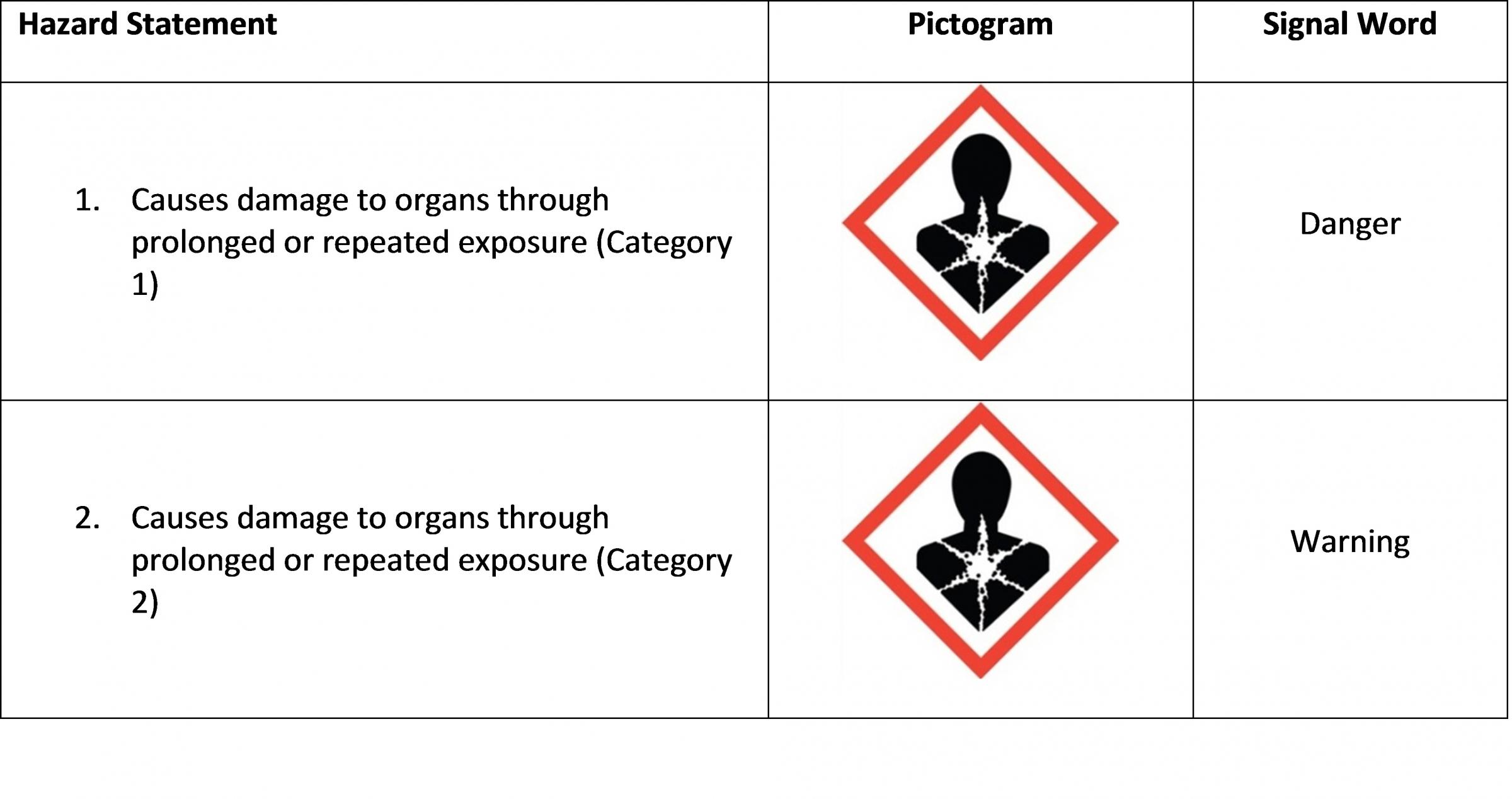Use this reference guide on the GHS hierarchy of hazard statements, pictograms and signal words in conjunction with the Reference Guide to GHS Container Labels to create a Globally Harmonized System (GHS)-compliant label for a chemical mixture. Each mixture component's Safety Data Sheet (SDS) should be used with this guide to determine required label elements for a mixture.
- If two chemicals in a mixture present different levels of hazard within the same hazard class, this hierarchy will determine which hazard is represented on the label.
- If only one chemical in a mixture is considered hazardous (with all others classified as “non-hazardous” under the GHS), use the hazard information (e.g. pictogram, hazard statements, signal word) from the hazardous chemical’s SDS to create your label.
The information in Appendix A are organized by GHS hazard classes (e.g. Flammable Liquids, Acute Toxicity – Skin Contact). They present the hazard statements within each class, along with applicable signal words and pictograms in order of high hazard to low hazard. Follow the steps below to use these tables:
- Identify which table(s) the hazard statements listed on the chemicals’ SDSs apply to.
- If two or more hazard statements fall within the same table, choose the hazard statement with the highest degree of hazard (i.e. choosing “fatal if swallowed” in row 1, over “harmful if swallowed” in row 3) to be written on the mixture label.
- Once the appropriate hazard statement is chosen, identify the appropriate pictogram and signal word from the same row of the table.
- Use the chemical’s SDS to identify the appropriate precautionary statements for each hazard statement and include them on your container label.
If a hazard statement is not listed below, it does not follow a hierarchy and must be displayed on your label.
If the chemicals in your mixture use both “Danger” and “Warning,” only “Danger” needs to be displayed.
- Note that some pictograms (e.g. skull and crossbones and exclamation mark) apply to multiple hazard classes.
- Each pictogram and signal word only needs to be represented once.
When the hierarchy needs to be implemented, the following precedence applies for pictograms that should be displayed on the label:
- If the skull and crossbones applies, the exclamation mark should not appear;
- If the corrosive symbol applies, the exclamation mark should not appear when it is used for skin or eye irritation;
- If the health hazard symbol applies for respiratory sensitization, the exclamation mark should not appear for skin sensitization or for skin or eye irritation.
Two examples of properly labeled mixtures are included below, with explanations on how hierarchial decisions were made.
Example Mixture 1
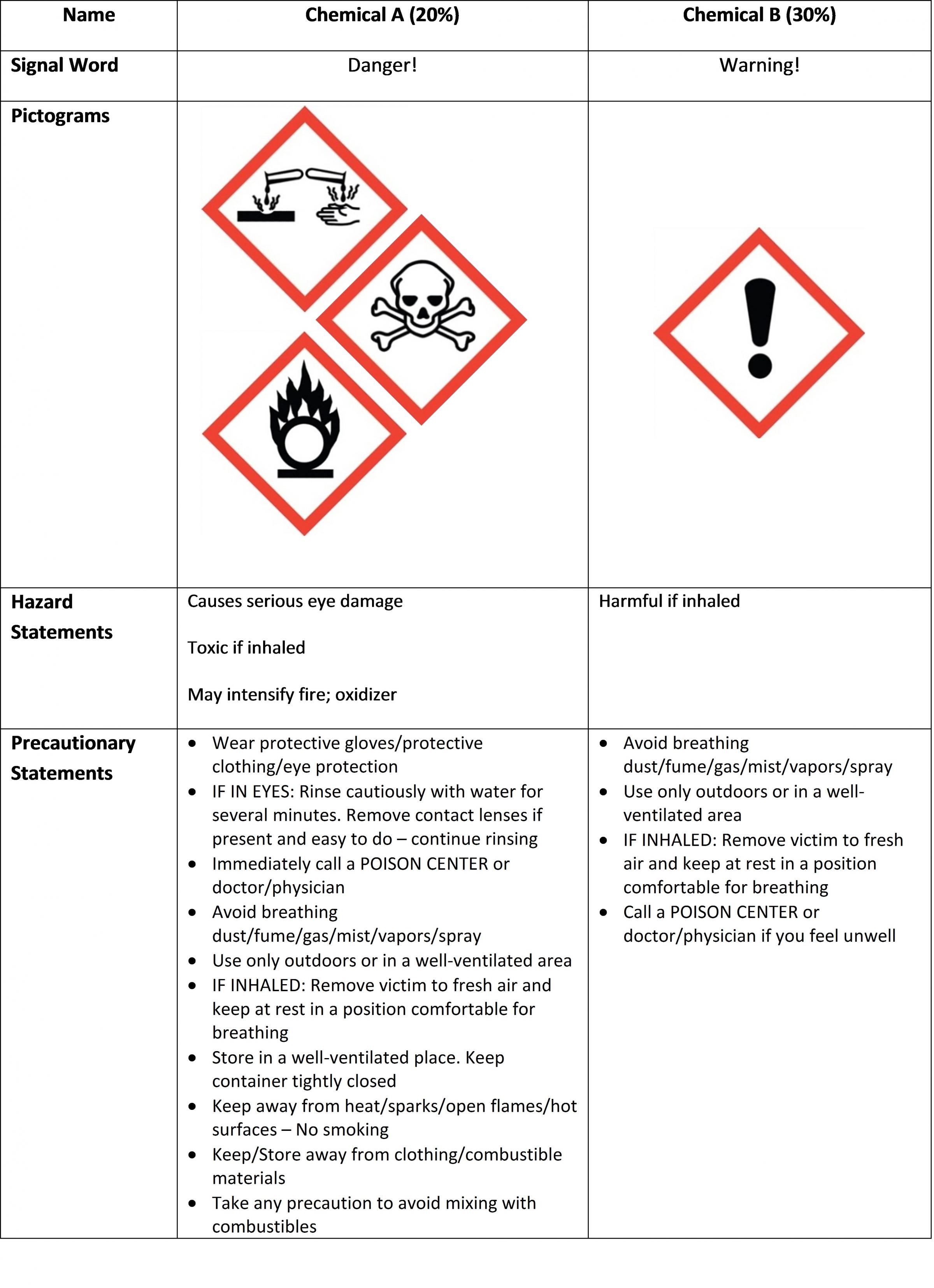
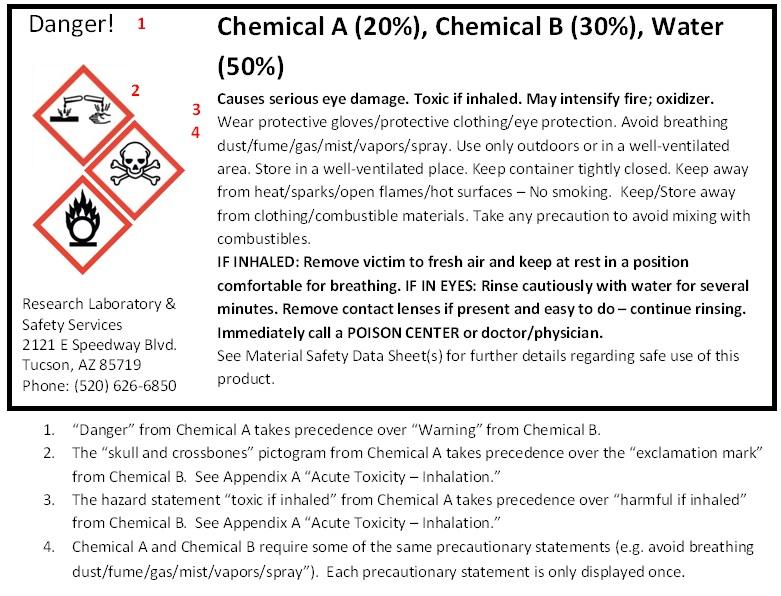
Example Mixture 2
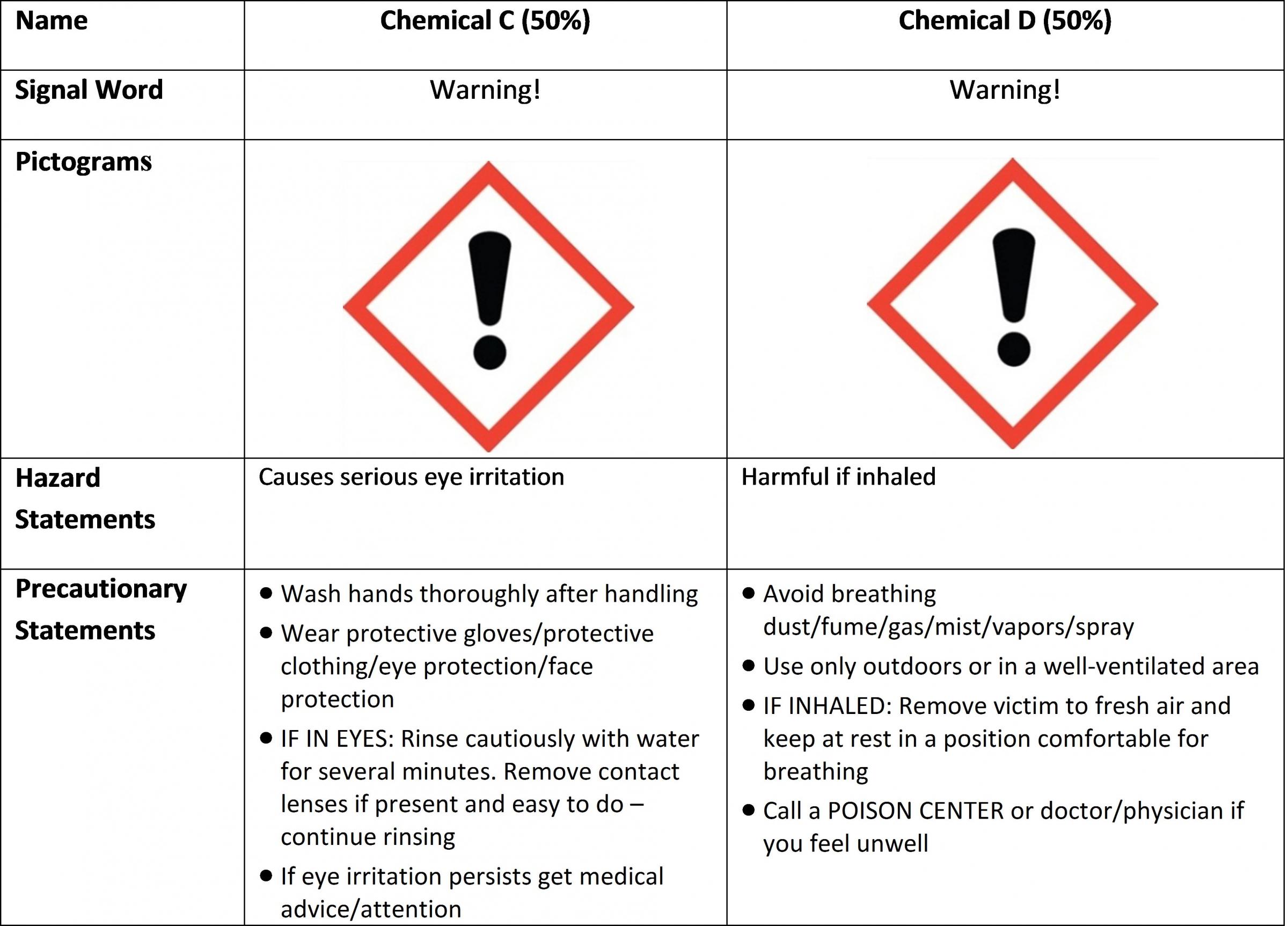
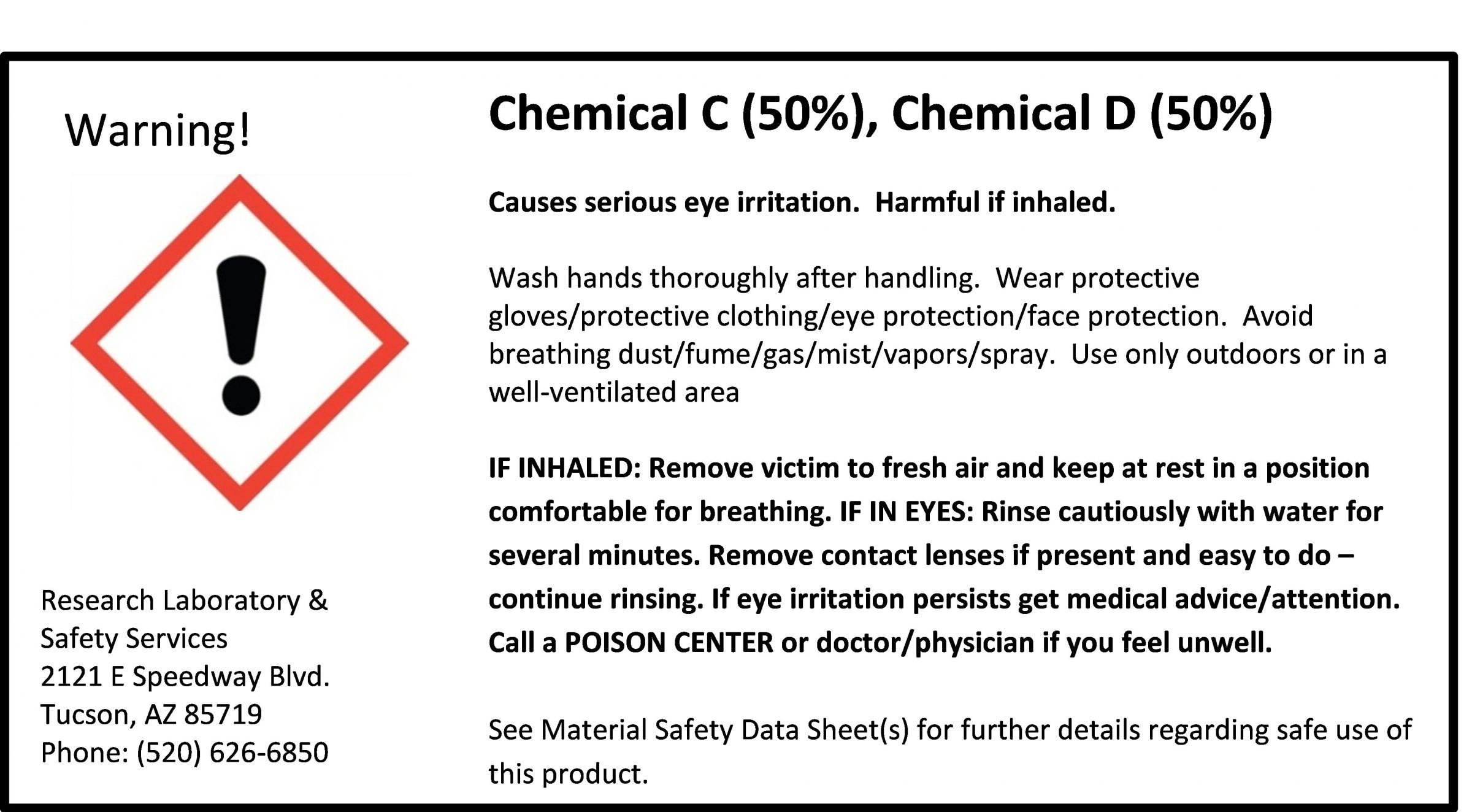
Note: All components of this label were combined from both Chemical C and Chemical D; there was no hierarchy to implement.
Appendix A: Hazard Class Tables
Acute Toxicity - Oral
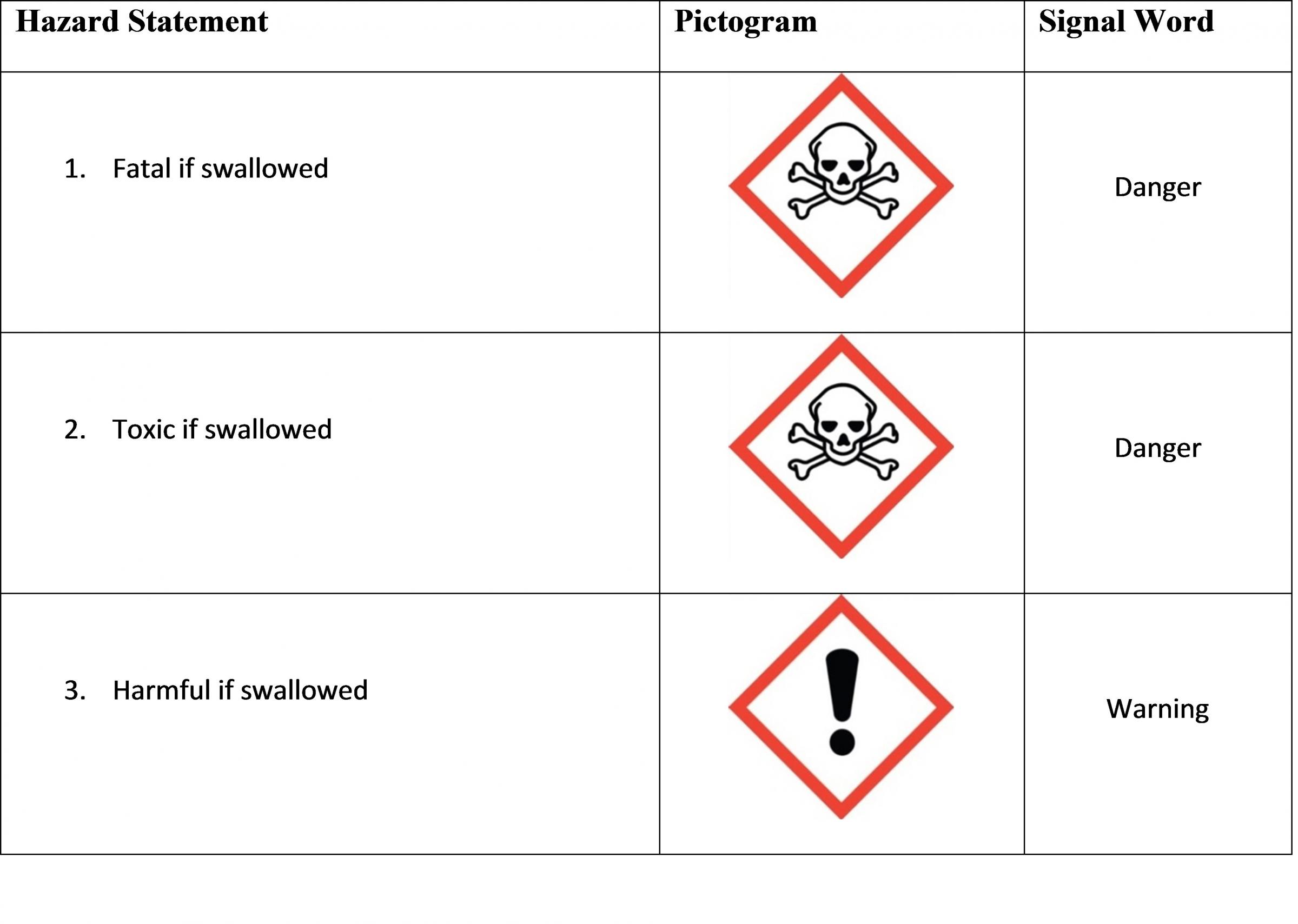
Acute Toxicity - Skin Contact
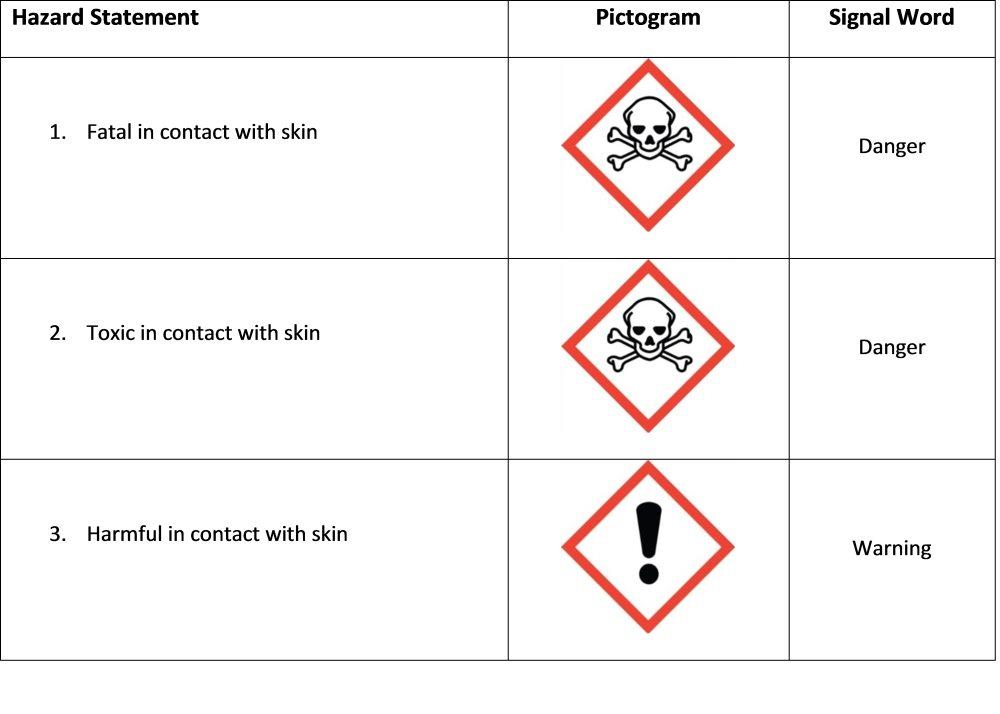
Acute Toxicity - Inhalation
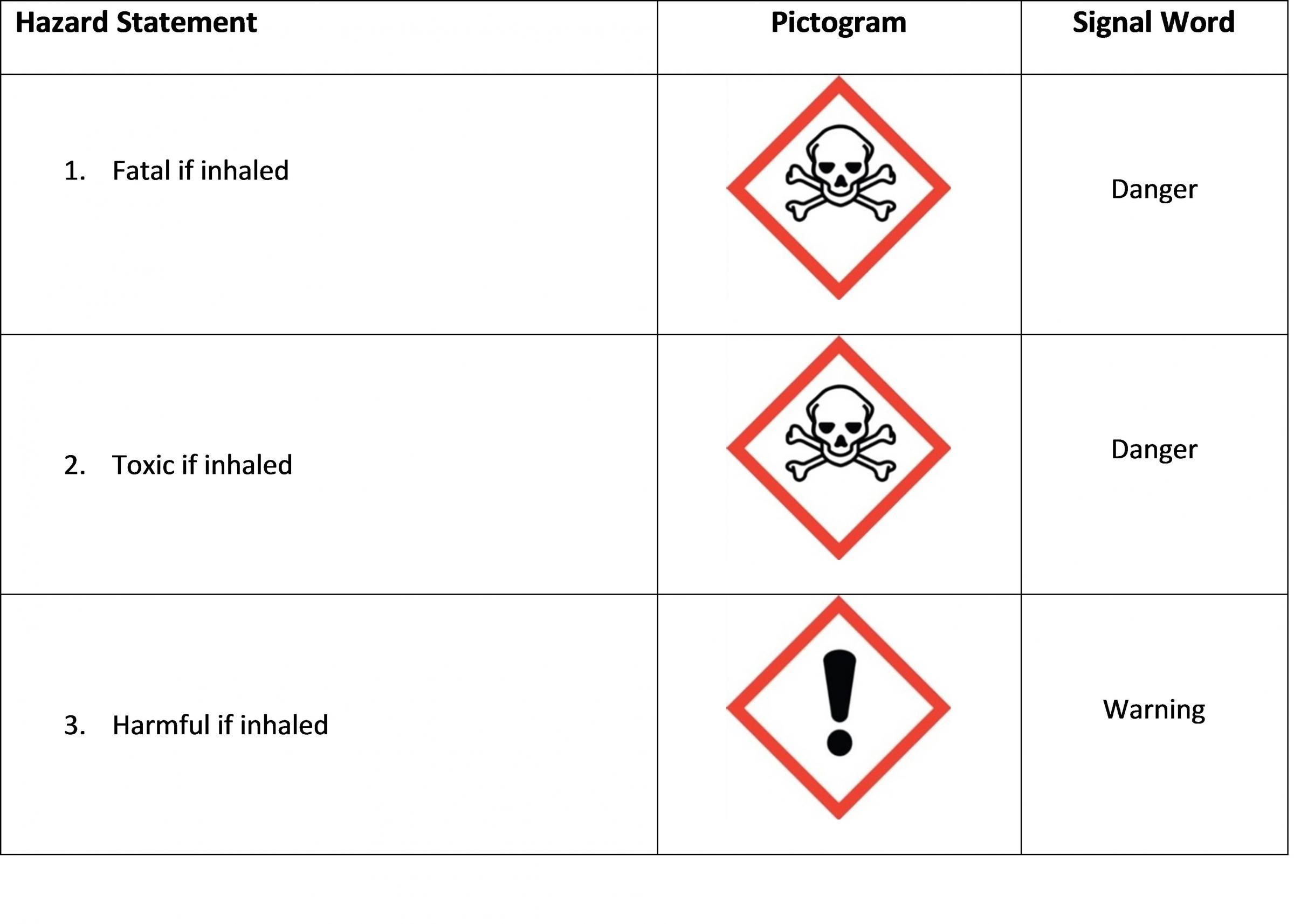
Skin Corrosion & Irritation
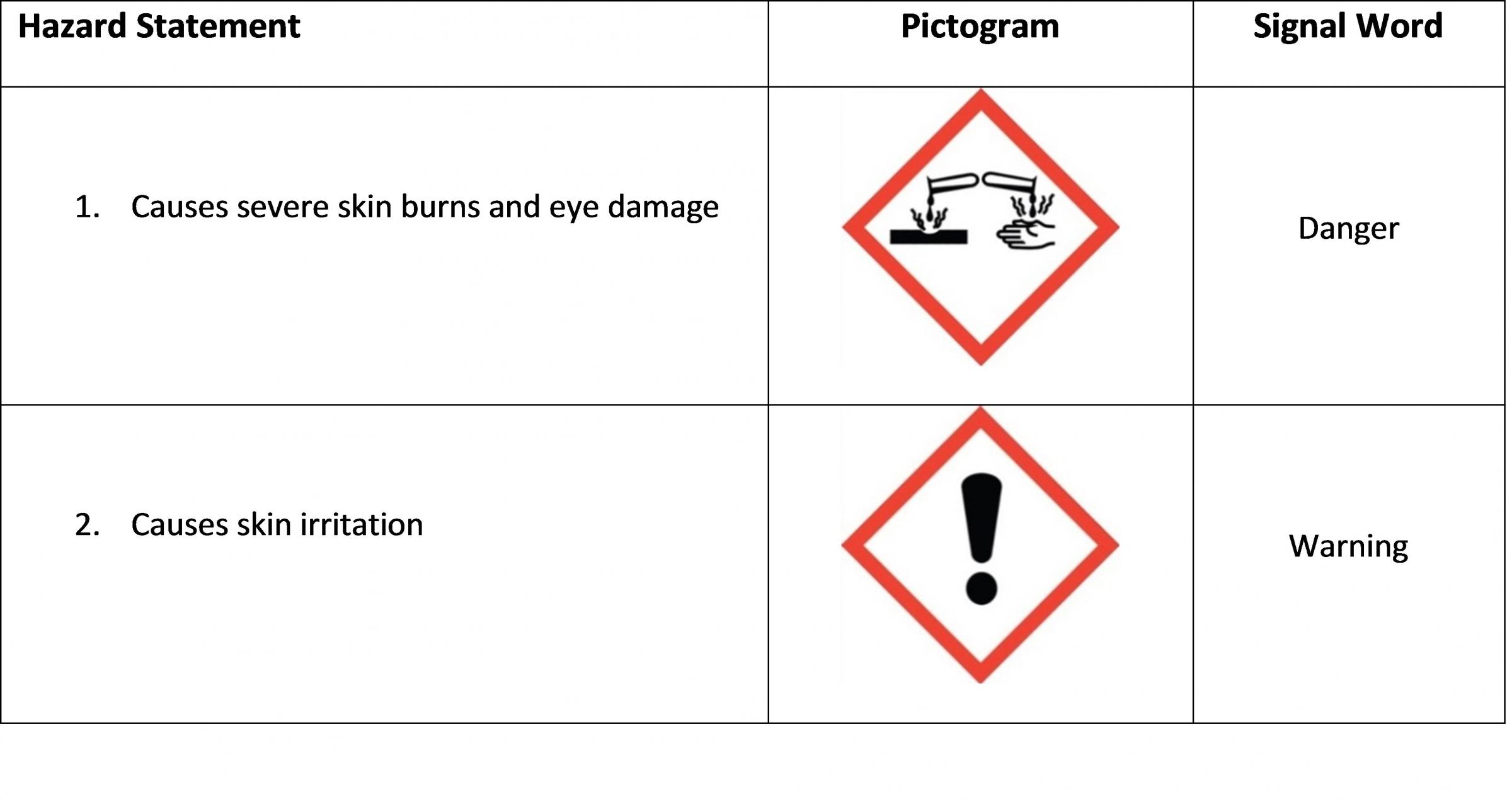
Serious Eye Damage & Eye Irritation
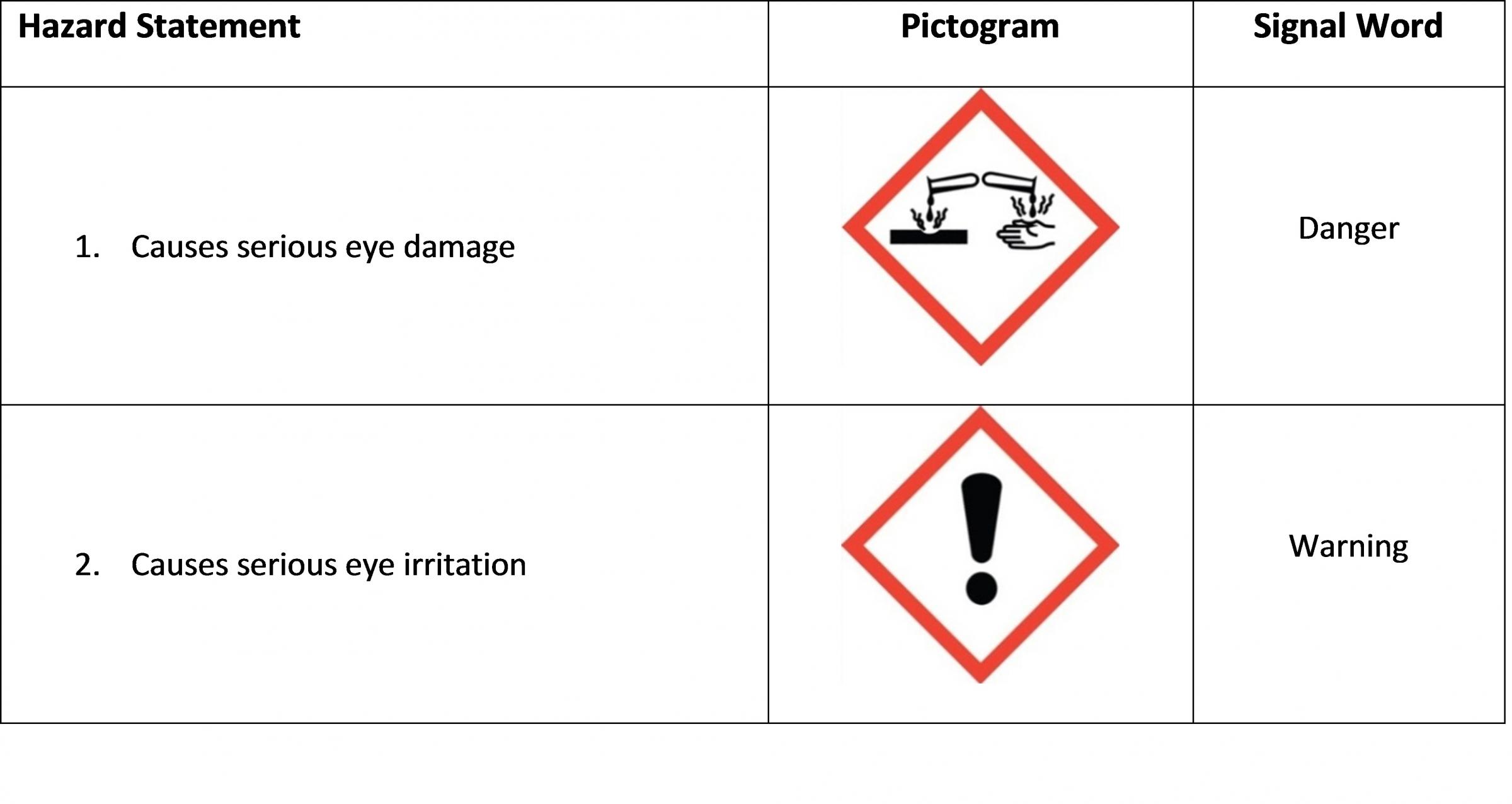
Some hazard classes (e.g. flammables, oxidizers, carcinogens) follow a GHS hierarchy for hazard statements and signal words, but the same pictogram is used to represent each hazard statement. The hierarchies for these situations are detailed in the tables below.
Flammable Liquid
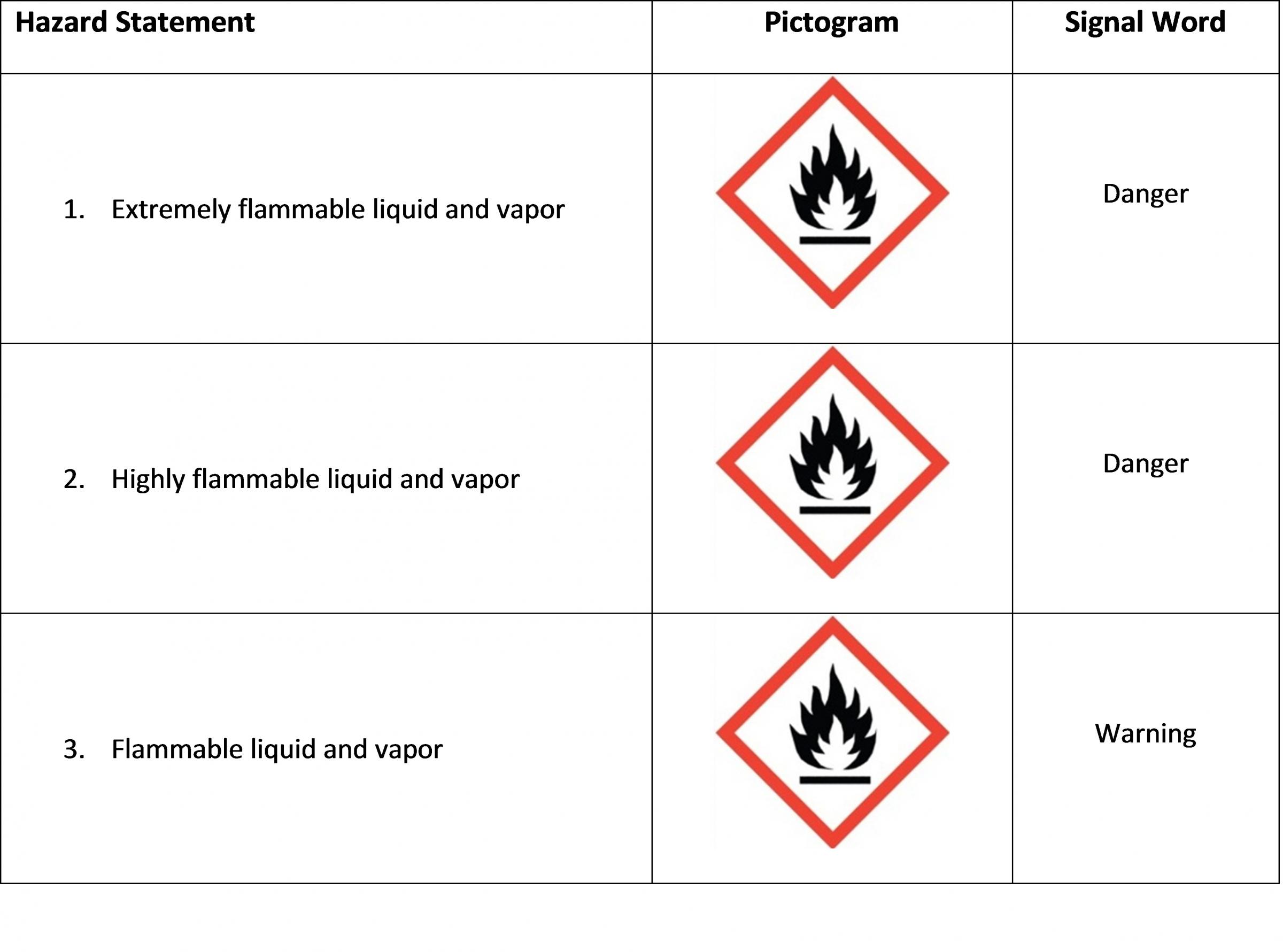
Flammable Gases
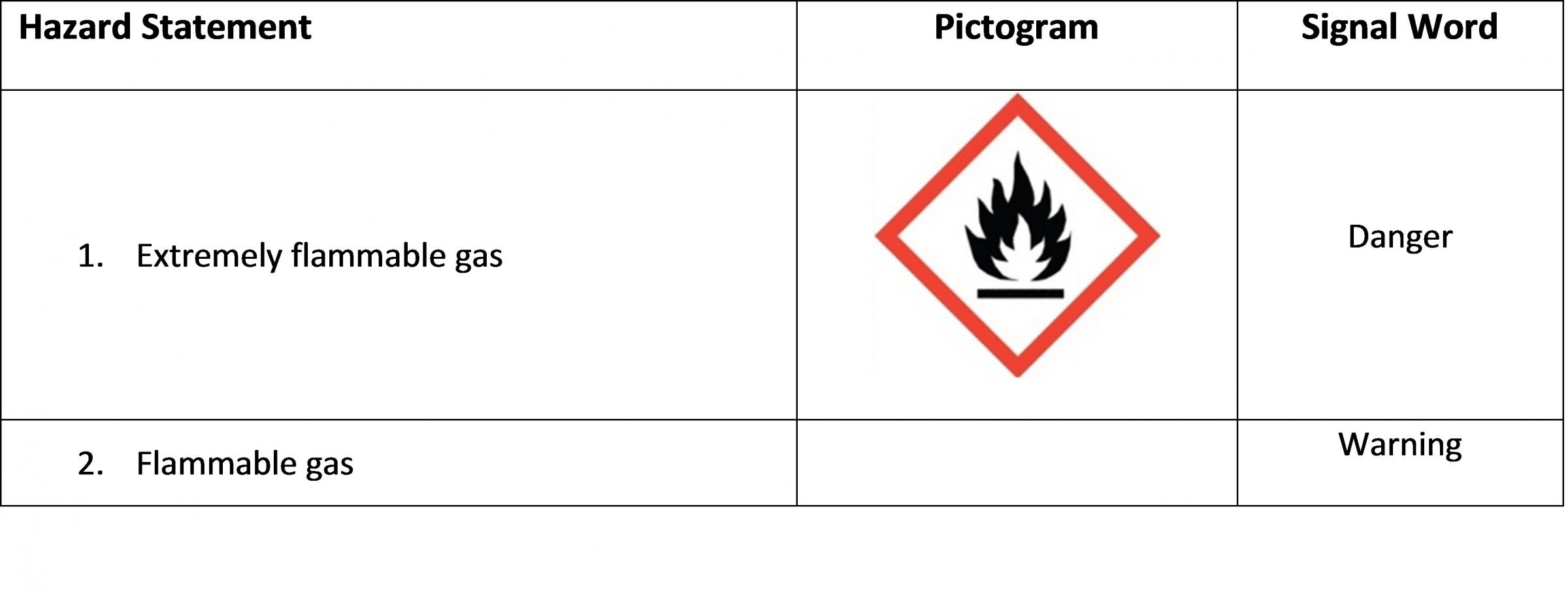
Flammable Aerosols
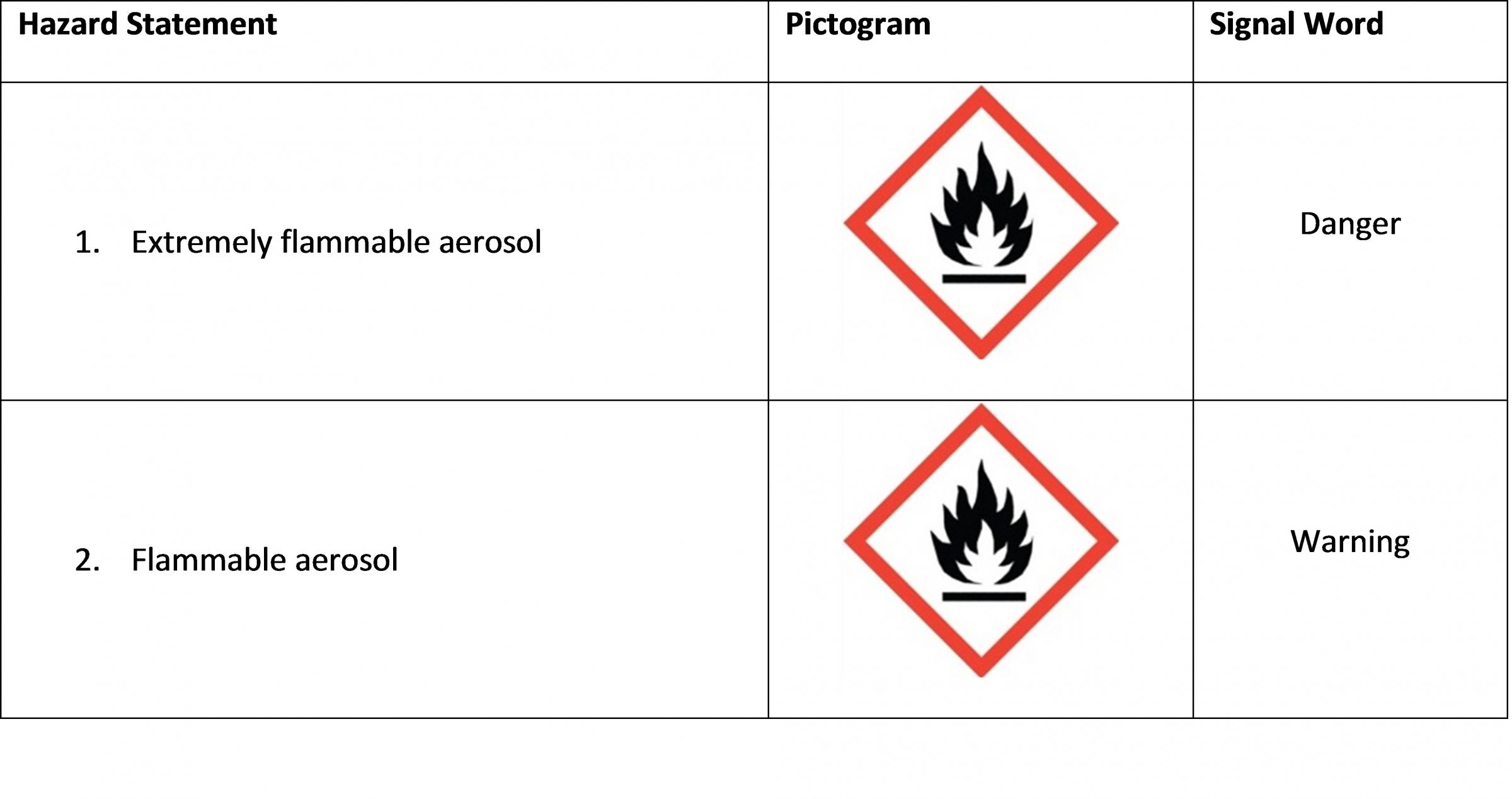
Flammable Solids
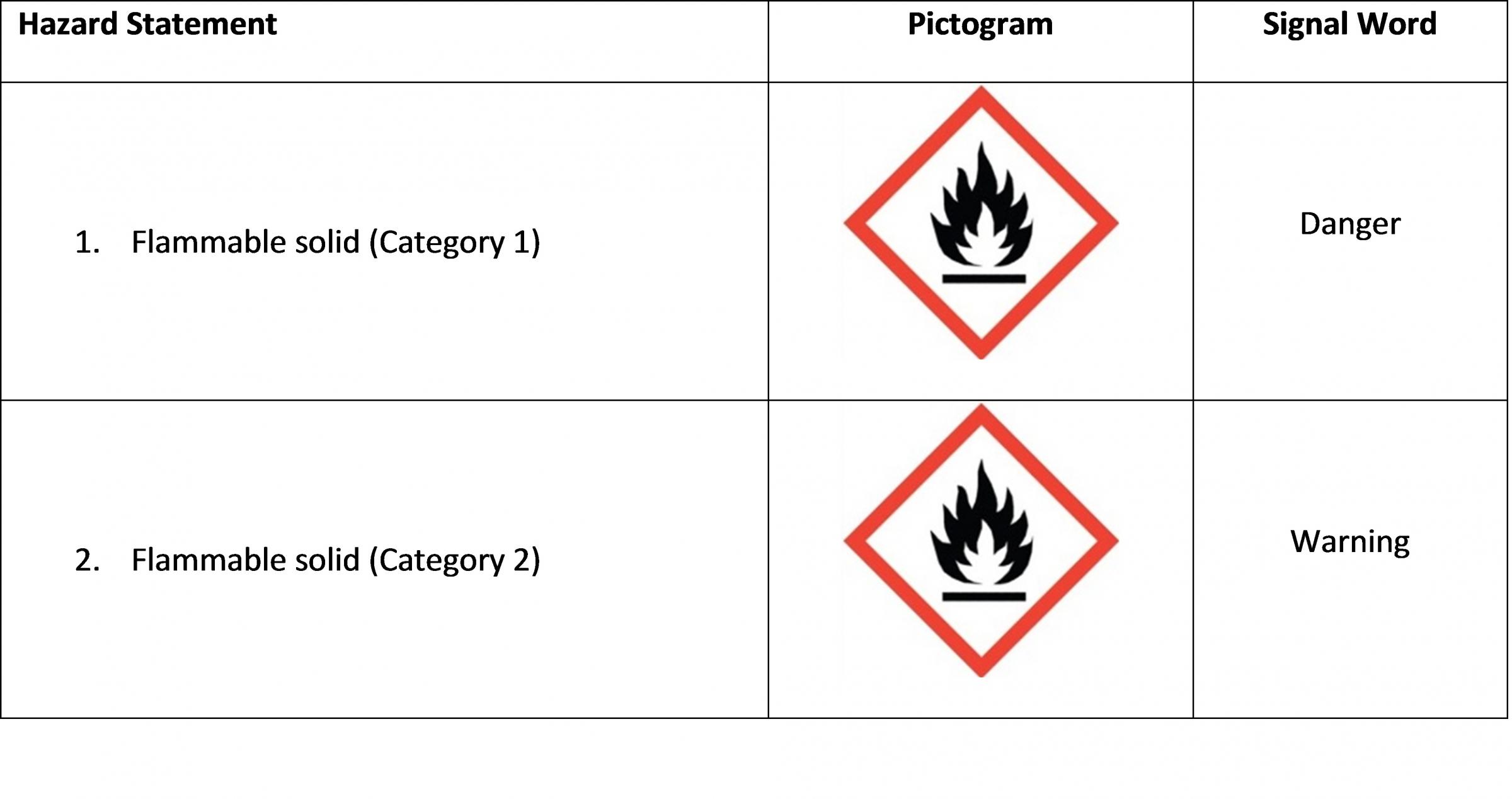
Self-heating Substances and Mixtures
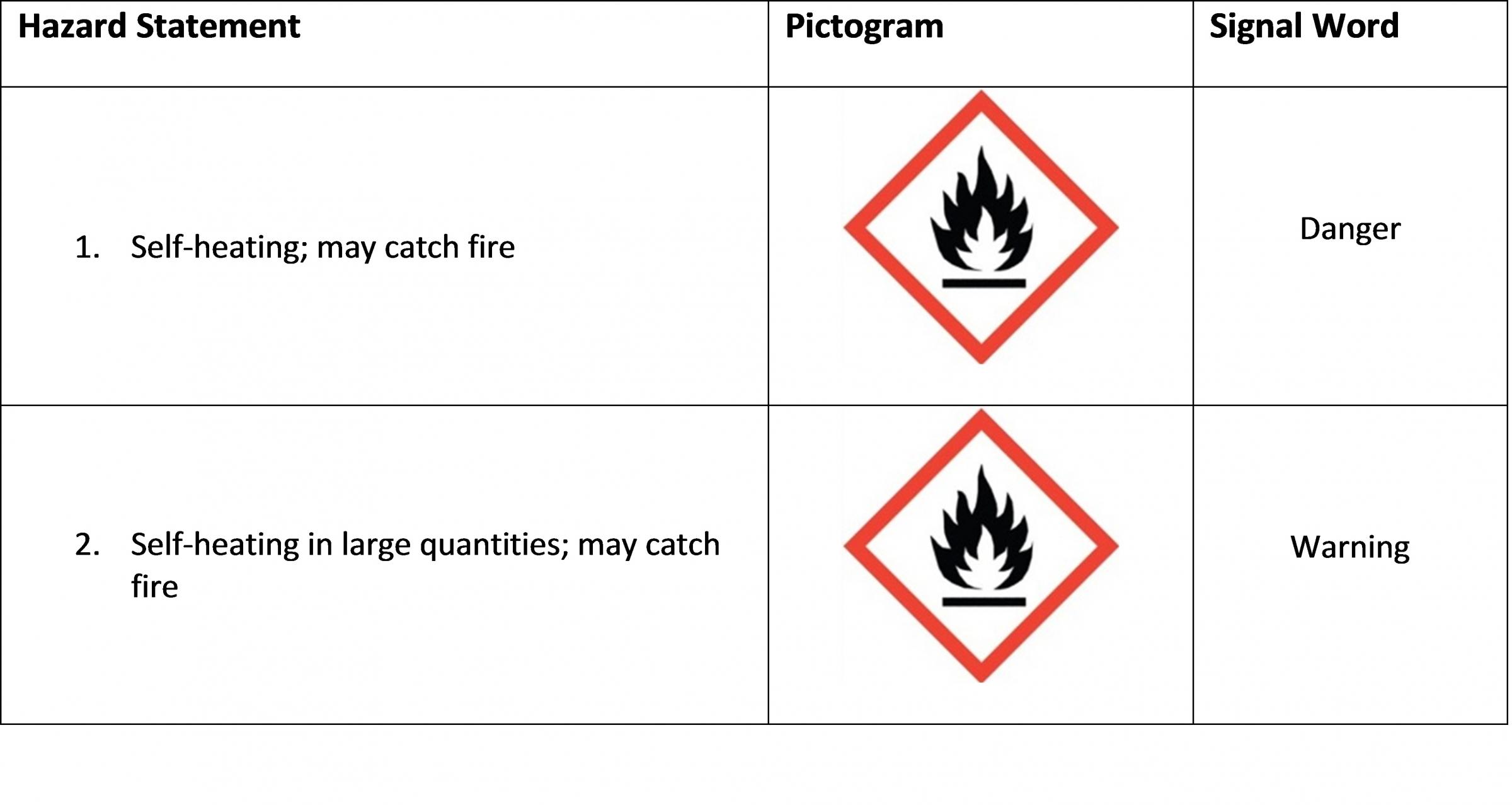
Substances and Mixtures that, in Contact with Water, Emit Flammable Gases
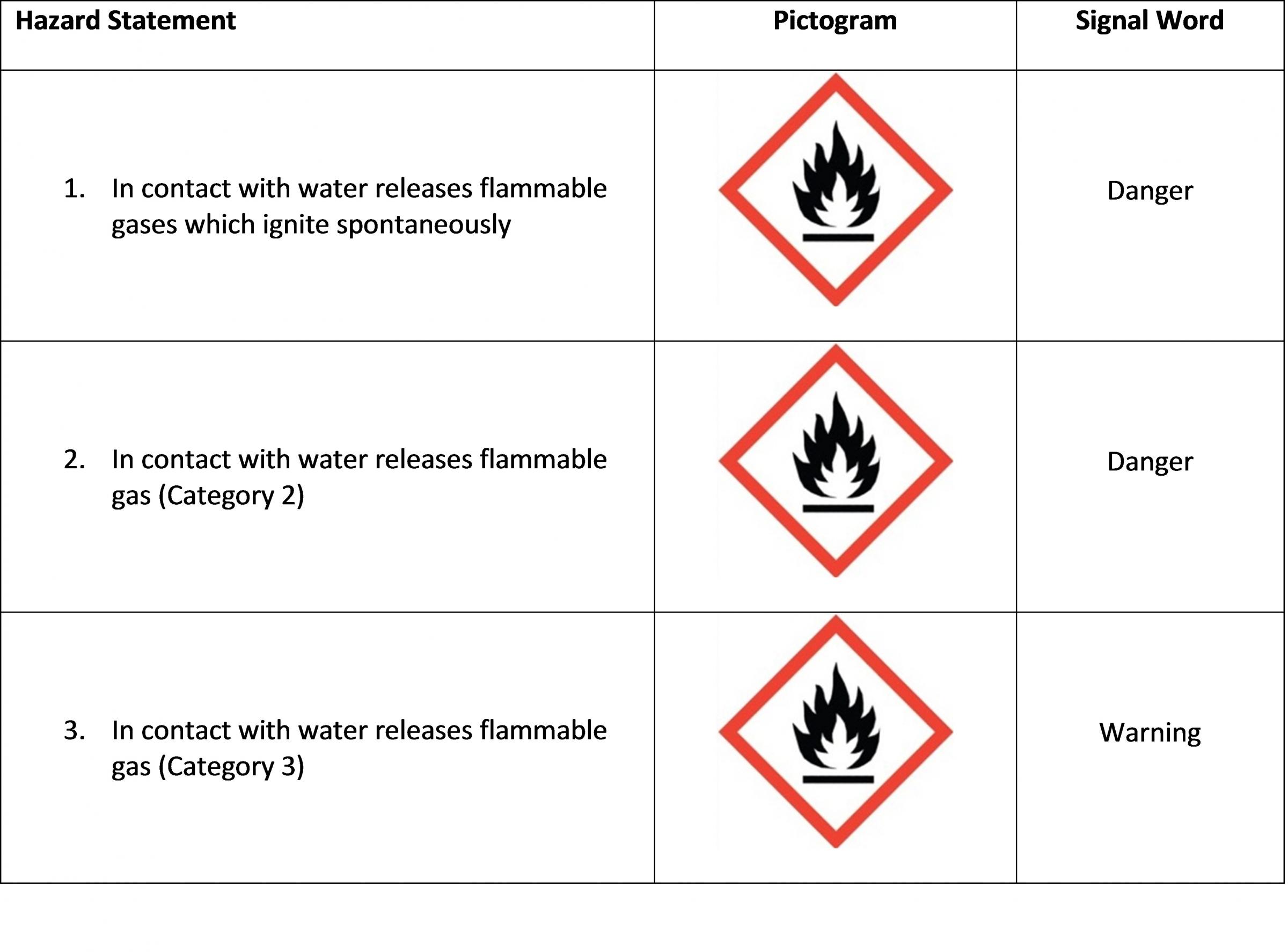
Oxidizing Liquids & Oxidizing Solids
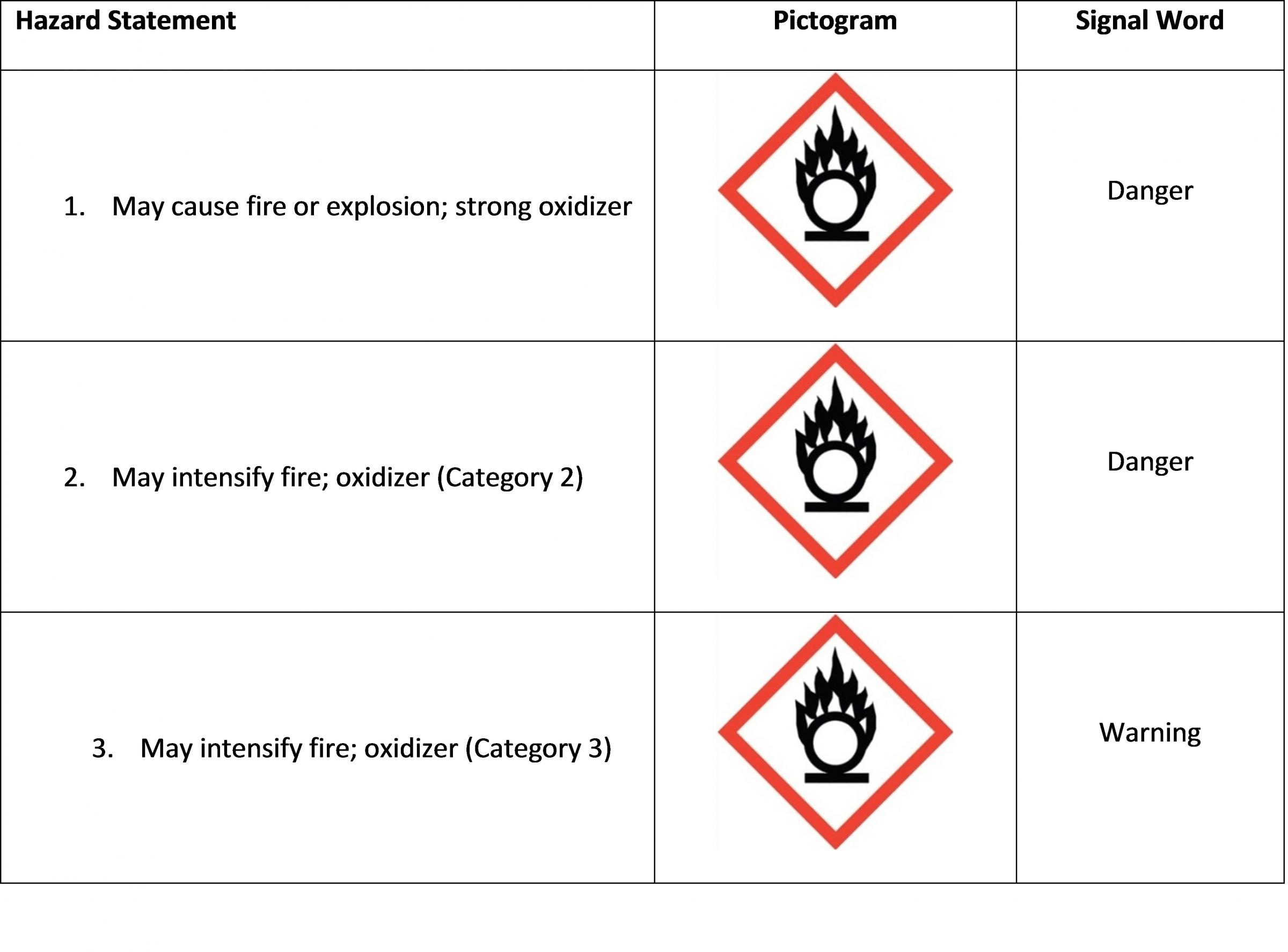
Germ Cell Mutagenicity
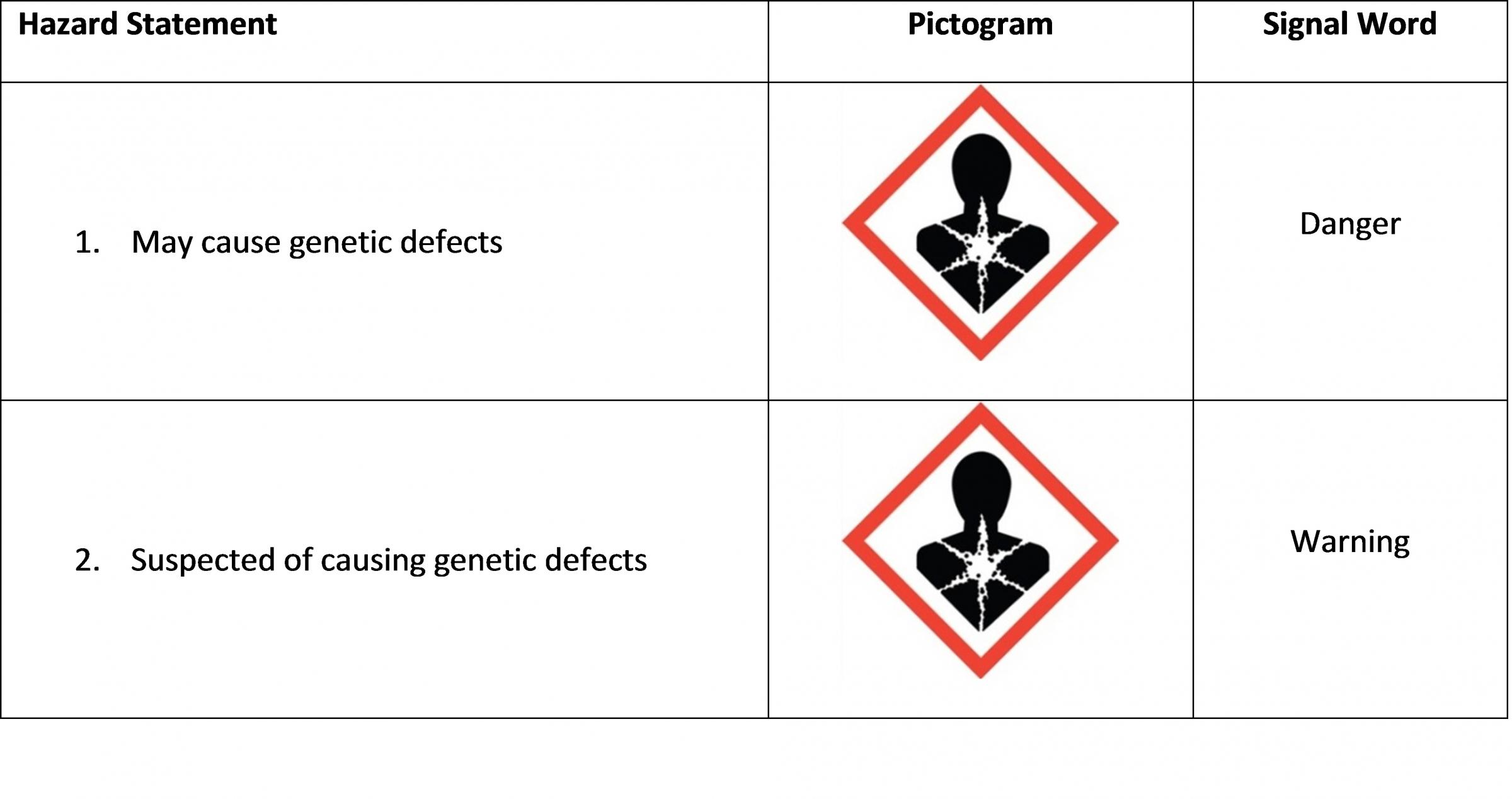
Carcinogenicity
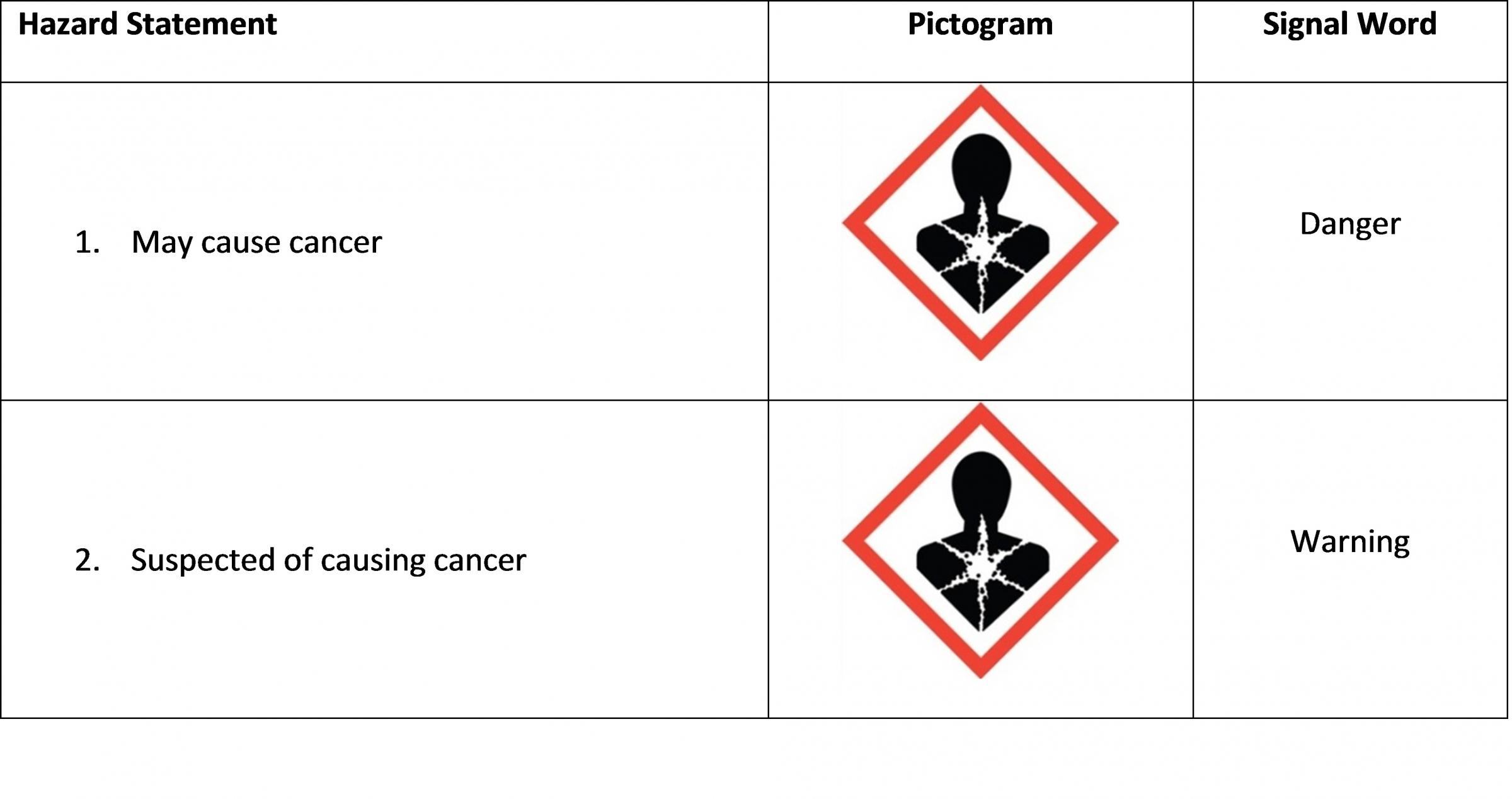
Reproductive Toxicity
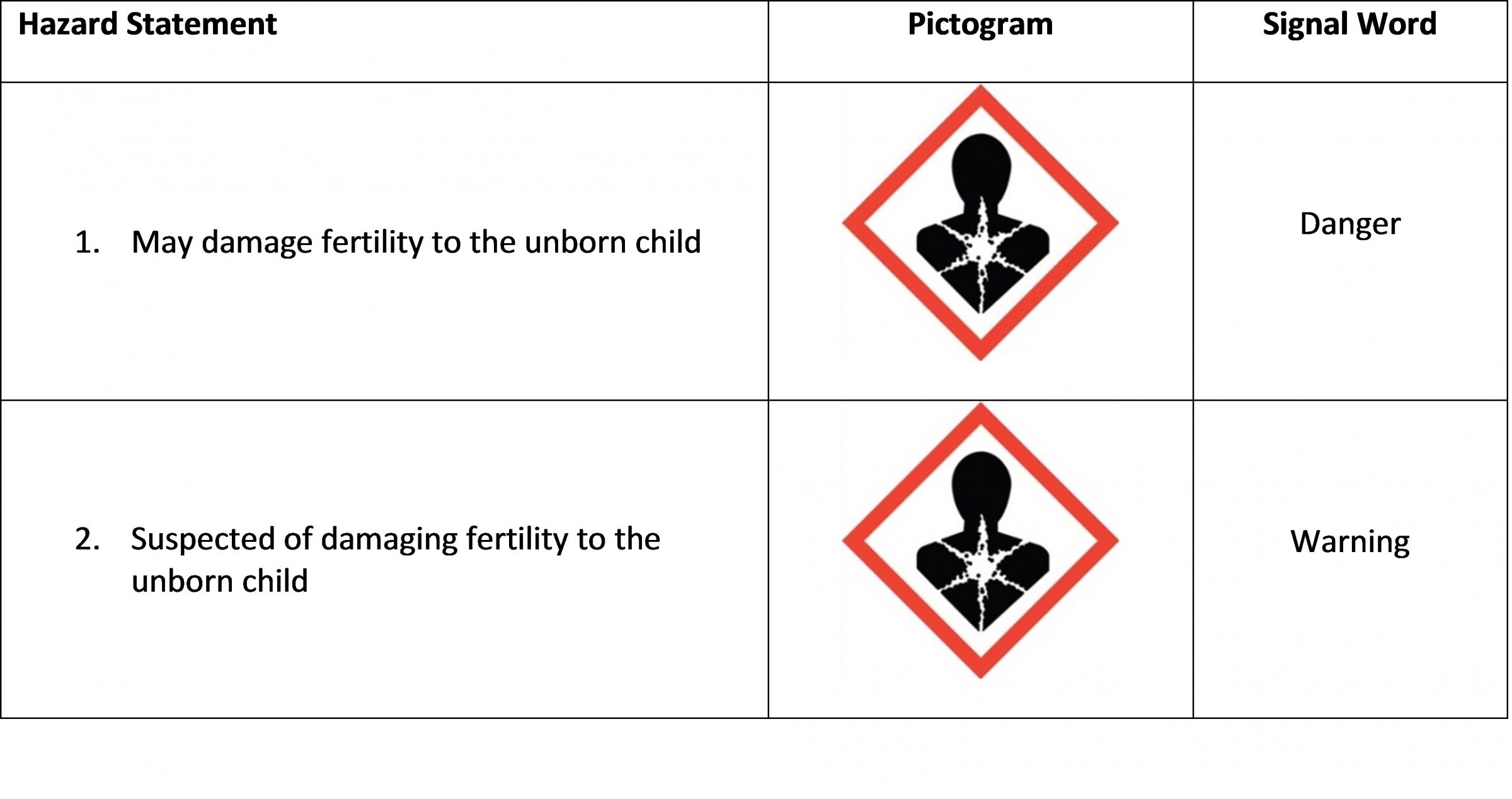
Specific Target Organ Toxicity, Single Exposure
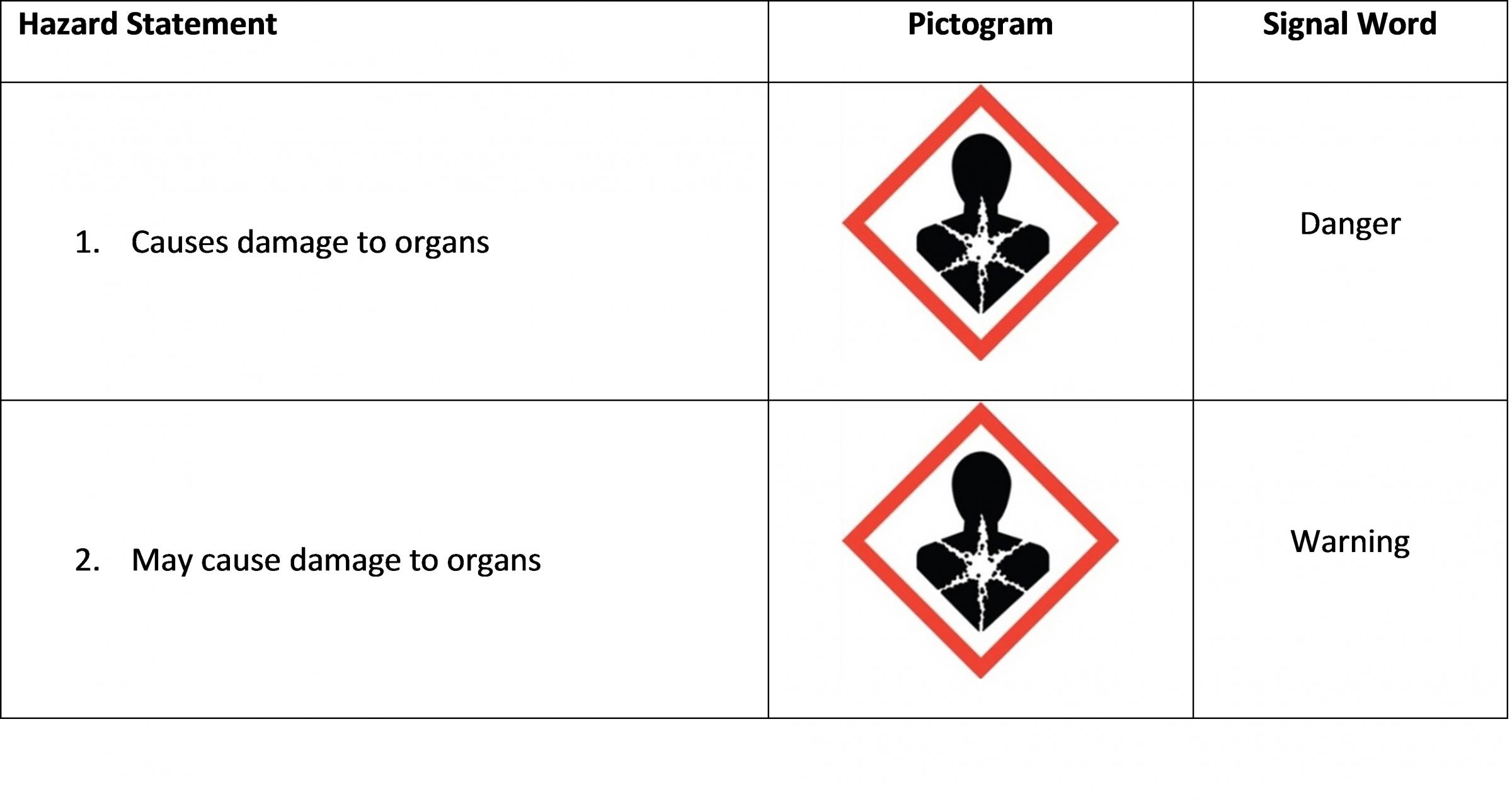
Specific Target Organ Toxicity, Repeated Exposure
